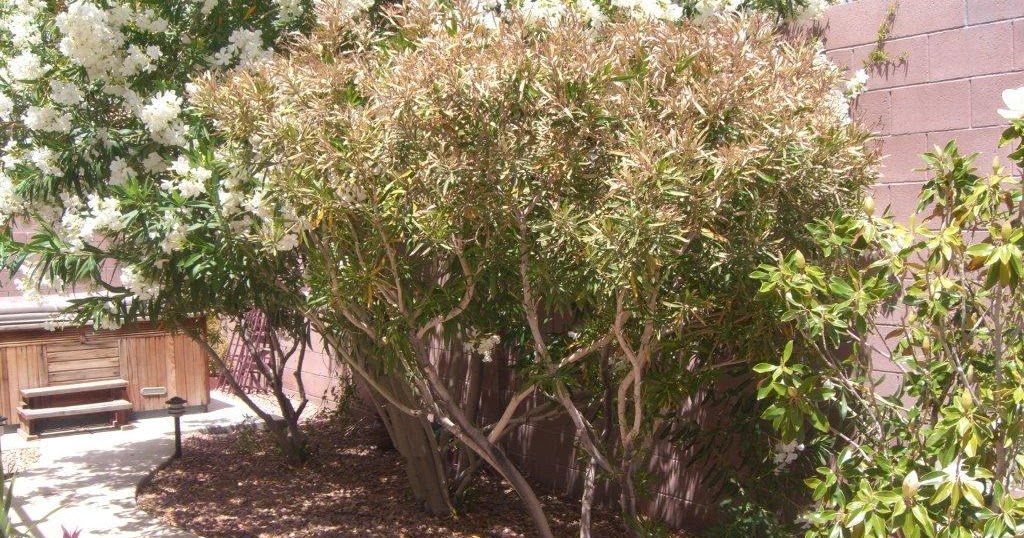
Outenreath says the oleander problem allegedly started in California, where there are 2,000 miles of freeways planted with oleanders, and has spread. "At this time, there is no cure or treatment," he concurs. Gary Outenreath of Moody Gardens says oleander scorch is a nasty bacterium that affects the xylem tissue by clogging it up, thus restricting uptake of water and nutrients, giving the plant the look of being too dry, which it is. The appearance of the disease, however, is quite delayed from the time of infection." "Sometimes the plant does come back from being cut way back, but often it will then die back. "The only thing that we suggest is that as soon as one notices any such changes in the plant that it be cut to the ground or even removed if possible to get rid of the possibility of the leafhoppers spreading it to nearby plants. "There is no known treatment for this currently, but since this is a variant of the organism that causes the big problem for the grape industry, there are a lot of people working on it," she continues. "The infection blocks the vascular system of the plant, and it soon turns an odd color green and then turns brown as it dies." "This insect also feeds on many wild plants, and I presume that is why the more open areas with developments close by have the problem," Head says. Head says the disease is caused by a bacterium, Xylella fastidiosa, that is spread by the sting of a leafhopper. Gardeners will see a scalloped yellowing on leaf margins, followed by scorch on the margins or tips of the leaves. Head says the symptom she's noticed most often is that the leaves begin to turn a grayish green. "The more populated city area of the island does not have areas that have been identified." "In Galveston the bad areas are down at the western end of the island, including as close in as Moody Gardens," Head says. Many people, she notes, have lost long rows of oleanders they've had for years. She wonders if the plants have the oleander scorch disease that is killing oleanders in the area. Meador's article advised gardeners to prune affected areas as soon as the disease was observed - well below the areas affected.īut Head has other thoughts on the current problem. Witches'-broom is caused by the fungus Sphaeropsis sp. These shoots grow only a few inches, then turn brown and die.' "

Symptoms are abnormal clusters of new shoots appearing just below the branch tips. "This is the first time we have ever been asked about witches'-broom, but in an article by George Meador, former county agent, he says the following: `This disease has been known to attack oleanders in Galveston County. Elizabeth Head, executive vice president of the Galveston-based International Oleander Society, replies: I had not heard of any problem, so I asked three experts.


 0 kommentar(er)
0 kommentar(er)
